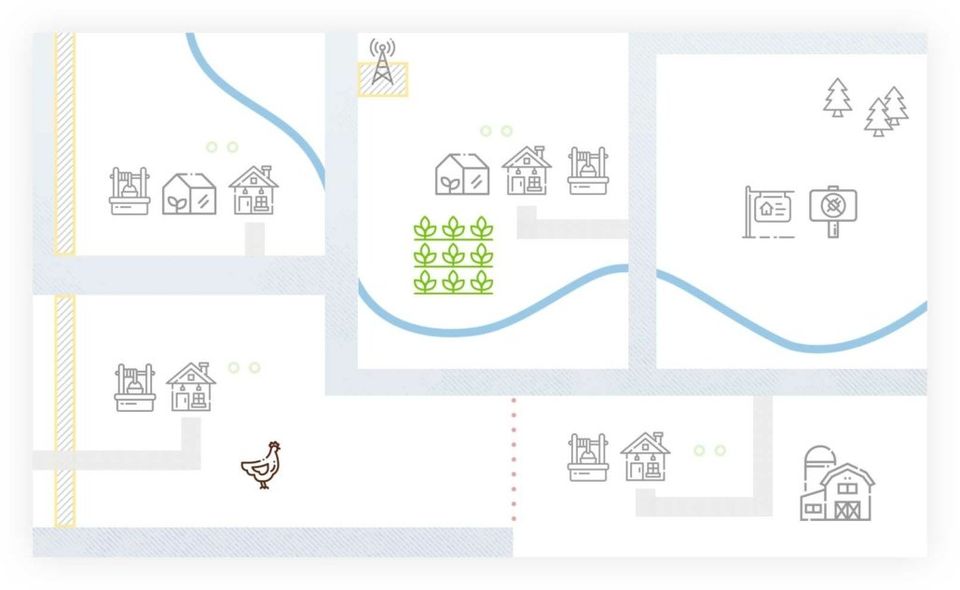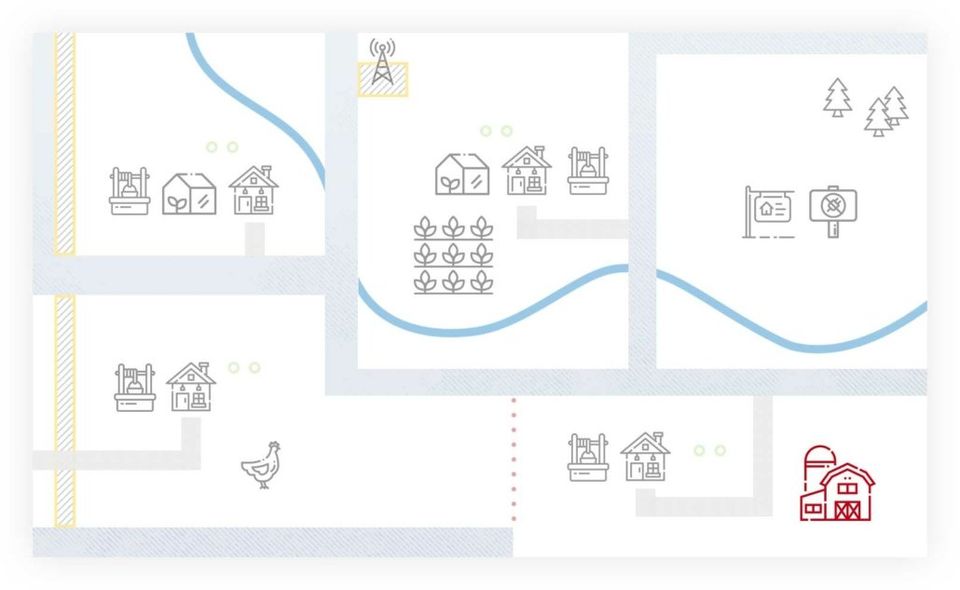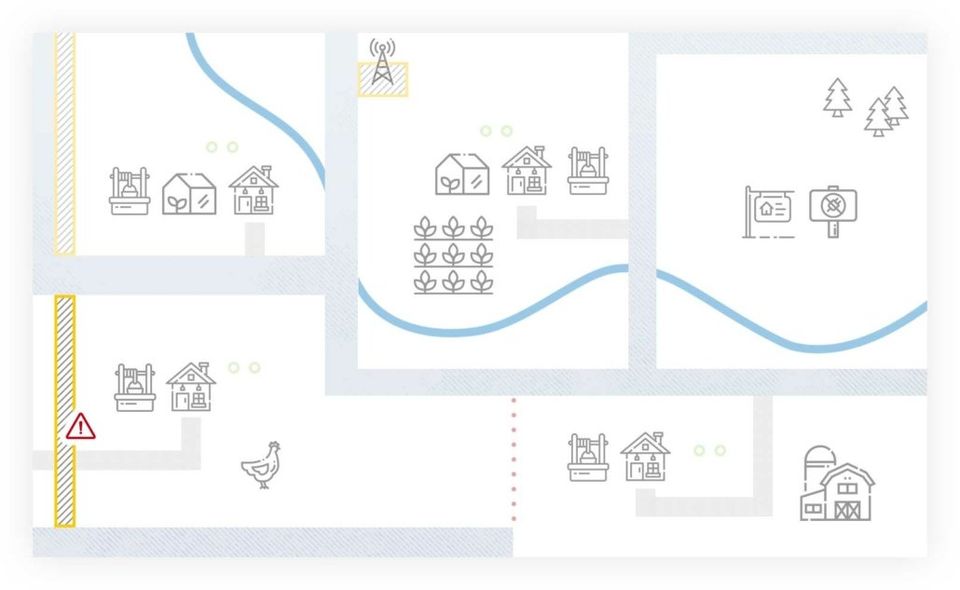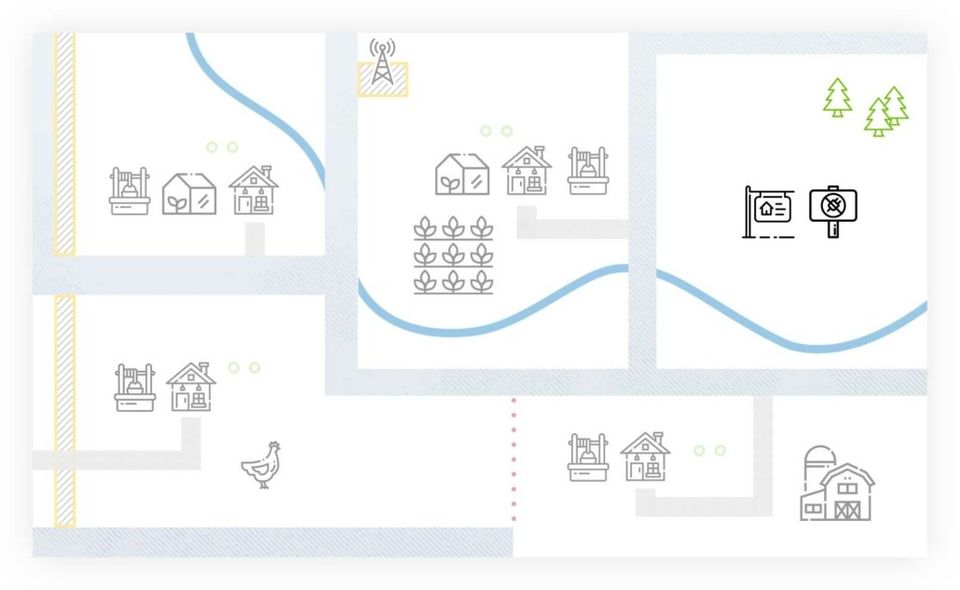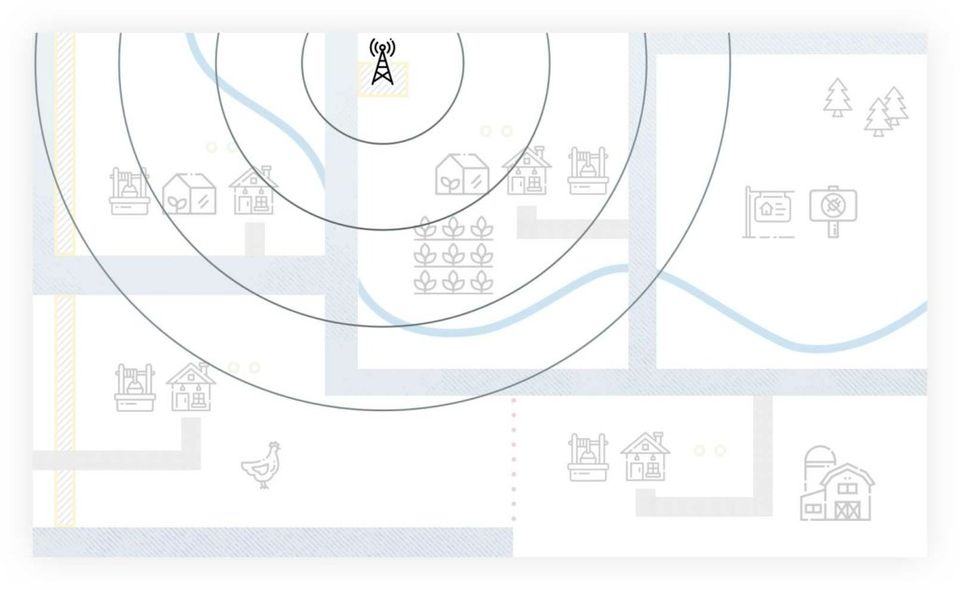Blog Layout
10 Red Flags to Look for Before Buying a Home with Land
Jun 14, 2020
When you purchase a home with land, there are red flags that may alert you to potential problems.
These issues don’t necessarily mean you shouldn’t purchase the property, and most of them may be easily resolved, but it is important to be informed about any issues that may affect your ability to enjoy your new property and use it as intended.
Below are 10 potential red flags to watch out for before purchasing your new property.
- Easements Issues
- Water Rights
- Faulty or Inadequate Septic Systems
- Contaminated Well Water
- Boundary Disputes and Surveys
- Usability of the Land
- Restrictions on Building Additional Structures
- Ingress or Egress Issues
- Electrical Power Source on Raw Land
- Nonexistent or Inadequate Internet Access
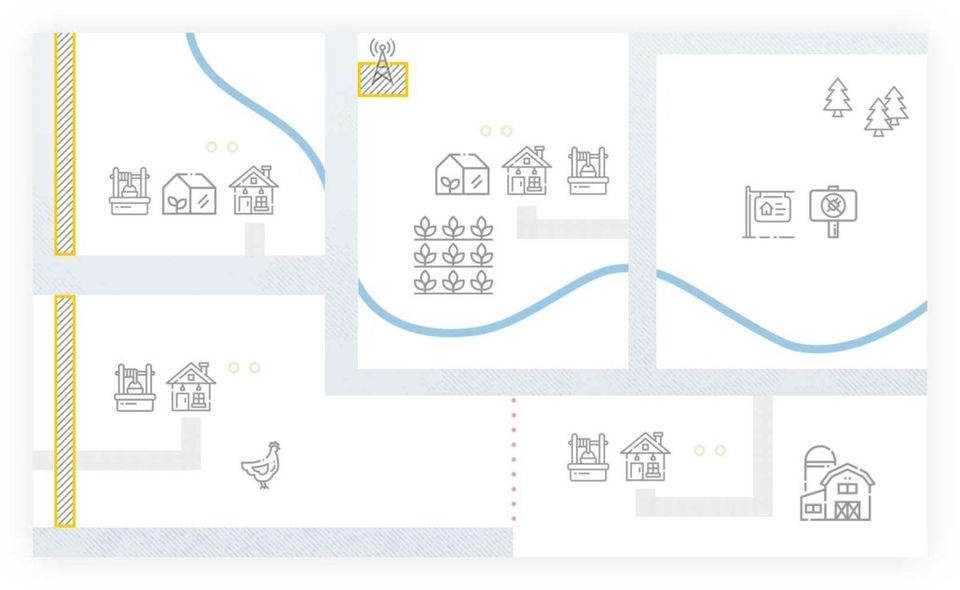
1. Easements Issues
Easements provide a person or organization with the rights to use a homeowner’s land for certain purposes.
For example, a utility company may have an easement to access a utility pole or buried cable on your property.
It’s important to find out what easements are present on your property, because it may restrict your right to build additional structures.
For example, you don’t have the right to install a pool on your property if it sits even partially in an easement, and you may not be permitted to plant a long line of trees if it blocks your neighbor’s view.
Find out about the property’s easements before you make any decisions so you are aware of any potential problems before they occur. Types of easements include the following:
Easement Appurtenant
These easements are attached to the formal ownership of the land and stay with the property when it is sold.
These easements allow property owners to access their land by passing through a neighbor’s land. This is common in situations where two properties share a driveway. If the property you are considering shares a driveway with another property, you will need to make sure you have the access you need.
Easement in Gross
These easements do not transfer to the new owners when a property is sold.
For example, if the neighbors have given permission for the previous owner to cross their land to access a beach, the buyer would not be legally entitled to do the same. Knowing about these easements ahead of time may eliminate any confusion or disagreements with your neighbors.
Prescriptive Easements
These easements are for when someone has been using the property on a regular basis for a period of time without being restricted by the owner. This is also known as “squatter’s rights.”
In California, if a squatter lives on a property and pays the property taxes for five years, that squatter may have legal rights to the property. It’s important to find out who is living on the property and what their arrangements are, whether it’s the seller, renters, or others. This may protect you from purchasing a property that someone else may have the legal right to inhabit.
2. Issues Concerning Water Rights
It’s crucial to secure water rights for your new property to make sure you have sufficient water resources to support what you plan to do on it.
Riparian water rights provide legal access to bodies of water that are adjacent to a homeowner’s property, such as rivers, creeks, and streams. These rights are appurtenant, which means that the rights run with the land and are transferred to the new owner when a property is sold. Homeowners have reasonable use of this water, which means that their consumption must not interfere with other landowners downstream.
Appropriative water rights are used when someone appropriates water from areas where it exists naturally to land that does not naturally have water. The two types of water rights you need to consider include the following:
Domestic
Domestic water rights refer to the water you use inside your home and to water the lawn or a garden. These rights do not include water used for irrigation for agricultural purposes.
Irrigation
If you need water for agricultural purposes, you will have to acquire water rights for irrigation. These rights are much cheaper, and they are separate from water from your well.
California residents may find out more information about water rights from the State Water Board’s Division of Water Rights.
3. Faulty or Inadequate Septic Systems
Not having an adequate septic system could result in drainage problems, and may even cause sewage to back up into your home. Homes built on properties in rural areas require septic systems to manage waste.
Size requirements for a septic system’s leach field are determined by the size of the house and the number of potential occupants, so it’s important to make sure it is large enough to handle any waste from the home.
4. Contaminated Well Water
Since rural homes aren’t hooked up to municipal water systems, they rely on wells for water.
It’s important to have any wells on the property tested for contaminants, including minerals, radon, and arsenic, to make sure it is safe for drinking. If the drinking water is deemed unsafe, you will have the extra expense of a water treatment plan.
5. Boundary Disputes and Surveys
To ensure you have accurate information about the property’s boundaries, avoid relying on an existing survey of the property, and instead, have a new survey completed.
If the survey you are using has the previous owner’s name on it instead of yours, you may end up with problems if there are boundary disputes or issues with easement locations.
If your name isn’t on your survey certification, you won’t have any legal recourse if the survey has errors.
Having a new survey completed will confirm your property’s boundaries and protect you in the event of a dispute.
6. Usability of the Land
As you research a property, keep in mind what you want to do with it.
If you plan to do any farming, make sure the land isn’t prone to flooding or erosion, and you may want to avoid a property that has drastic slopes or changes in elevation.
If you plan to raise livestock, you must make sure the property is suitable and can be used for this purpose.
Local zoning restrictions may affect how you can use your property, so be sure to find out about any restrictions before making a purchase.
7. Restrictions on Building Additional Structures
If you plan to build additional structures on the land, such as a barn, guesthouse, or other outbuildings, you will need to check the deed restrictions and zoning ordinances for the property to make sure you are legally permitted to do so. This is also important if you plan to own animals or have a home-based business.
A title search does not address zoning issues, so make sure you check the zoning of the property before purchasing it. There may have been zoning changes since the previous owner purchased the property, which may prohibit you from building a structure on the land.
8. Ingress or Egress Issues
Ingress refers to the right to enter a property, and egress refers to the right to exit it. These rights often exist as part of the property’s easements. For example, because a utility company has an easement on a property, representatives from that company have the right to come onto your property to access utility poles, meters, and buried cable.
If the property you are purchasing is landlocked, make sure you have the right to access it through an easement or right of ingress and egress. You may even want to make ingress and egress rights part of the deed so you won’t require a separate easement. This makes documenting these rights easier and may appeal to a future buyer if you eventually decide to sell your property.
9. Electrical Power Source on Raw Land
If you are purchasing raw land that doesn’t have an existing power source on it, you will need to find out if electricity is available, what the process of securing the power source is, and what the cost will be to do so.
Skipping this step may result in you purchasing a property that is not accessible to power or may require great expense to do so. Keep in mind that in the event of an electrical outage, rural areas are often the last to have power restored, so you may want to purchase a back-up generator power source as well.
10. Nonexistent or Inadequate Internet Access
Services such as phone, cable television, and high-speed Internet may be limited in rural areas, so make sure you check into this before you make a purchase.
While you might be able to get these services in some areas, you may end up with only one provider option and slow data speeds. If you don’t do your research, you might end up with poor service or no service at all.
10. Nonexistent or Inadequate Internet Access
Services such as phone, cable television, and high-speed Internet may be limited in rural areas, so make sure you check into this before you make a purchase.
While you might be able to get these services in some areas, you may end up with only one provider option and slow data speeds. If you don’t do your research, you might end up with poor service or no service at all.

15 Jun, 2020
As a homeowner, at some point, you may want to make changes to your home. This may range from minor updates to more major renovation projects, but some of these projects are costly and may not bring you a good return on investment (ROI). According to the Remodeling 2019 Cost vs. Value Report , some remodeling projects have a greater ROI than others. The information in this report covers a wide variety of both interior and exterior projects and is specific to the San Francisco area. While this report contains useful information, it does not include the cost of sweat equity. These cost estimates are based on using paid outside labor. It also does not include information on smaller projects that homeowners commonly do to upgrade their homes, such as cabinet refacing, laminate and vinyl floor installation, bathtub refinishing, and painting. If you are preparing your home for sale, you can use the information in this report, along with current trends in renovation projects, to help you make the best decisions to make your home more appealing to potential buyers.

15 Jun, 2020
Remodeling your home can be a huge undertaking and a large investment of time and money. You may not be concerned about this if you don’t plan to move for a while, but if you are planning to sell your home anytime soon, there are several things you should take into consideration. If you know who your potential buyers might be, what types of homes they are interested in purchasing, and which remodeling projects are the best and worst investments, you can be confident in your decisions about how you prepare your home for sale in Sacramento. So, how do you determine how much you should spend and which projects you should do versus which ones are less important? According to the Remodeling 2019 Cost vs. Value Report , there are certain projects that may have a higher return on investment (ROI) than others. This data is specific to remodeling projects in the Sacramento area, and we will discuss some of these projects below.

15 Jun, 2020
The recent onslaught of wildfires has left many communities in Northern California devastated. The effects have been immense as fires have destroyed hundreds of thousands of acres of land, wiped out countless neighborhoods, and even leveled the entire town of Paradise. This destruction has left thousands of people without homes and faced with the burden of trying to rebuild their lives. For many residents, recovering from this disaster has meant finding temporary housing, rebuilding their homes, or relocating to different communities. While Northern Californians take on the arduous process of recovering, they face the challenges of the aftermath in the form of mental, emotional, and economic struggles. Below are some of the ways in which the wildfires have affected the housing market.

14 Jun, 2020
The housing market in Northern California fluctuates throughout the year, with an increase in home sales in the spring and a decrease in the winter. These fluctuations are influenced by the inventory of available homes, home prices, buyer motivation and sincerity, and the beginning and end of the school year. If you are planning to buy or sell a home, you should be aware of how these seasonal changes may affect your experience. Having a solid understanding of these seasonal changes may help you sell your home quickly and for the best price or buy a home that is affordable and meets the needs of your family. Below are some ways the seasons impact the housing market.

14 Jun, 2020
If you’re thinking of selling your home, you have probably wondered about its marketability. Will potential buyers be impressed with your corner lot, stainless steel appliances, or three-car garage? Will they be deterred by an outdated bathroom, a 20-year-old HVAC system, or leased solar electricity equipment? As you prepare your home for sale, there are some foundational things you can do to make your home more appealing to a large percentage of potential buyers. Below are some of the most common and important factors that affect how attractive your home is to potential buyers.
Contact
Address:
Keller Williams
548 Gibson Drive #200
Roseville, CA 95678
Phone:
Email:
DRE# 01944422
© 2024
All Rights Reserved | Catherine Brown Homes | Privacy Policy

Real Estate Web Design by Bullsai




